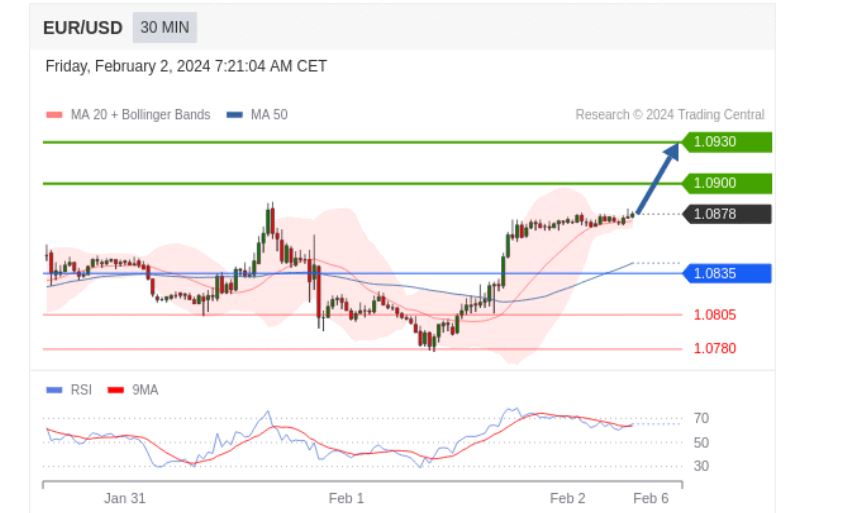- Summary:
- The Fed will will likely review the current high interest rates in March, with the ECB's in April, shifting focus to inflation and jobs data.
The euro opened trading on the front foot against the dollar in early trading on Friday, as investors kept a wait-and-see approach towards the greenback. Action around Wednesday’s Fed interest rate decision has fizzled down and investors have opted to wait for the US Nonfarm Payroll release later on Friday. This has given impetus to the EUR/USD pair, amidst speculation over potential weak US jobs figures.
Most analysts do not expect significant shifts from the expected figure of 187k jobs. A drop beyond that figure will signal a weakening economy, which could make a strong case for early rate cuts by the Fed. However, a rise beyond the estimated figure could dim hopes for rate cuts in March, as the Fed pushes towards its 2% inflation target.
France reported increased industrial output in December, beating the estimated 0.2% growth projection to register 1.1%. However, Spain’s unemployment figures rose by 60k, against an estimated reduction of 38k, sending a red signal against the economy. These mixed figures from the Eurozone could give in to pressure from the dollar, driven by rising US Treasury yields.
Meanwhile, European Central Bank (ECB) decided to retain interest rates as Christine Lagarde announced that it was still premature to discuss rate cuts. While many economists are concerned about the risks posed to the economy by the high interest rates, the ECB seems more focused on tackling inflation. As things stand, most policymakers expect the earliest rate cuts to come in April, a factor that could exert more pain on the trading block’s economy. Significantly, this places greater attention on inflation figures as far as the EU/USD trend goes.
Technical analysis

The RSI shows strong momentum for EUR/USD upside action, which will likely push the first resistance level to 1.0900 and the second one to 1.0930. A drop below 1.0835 could push the next support at 1.0805, beyond which the pair could go as low as 1.0780.


